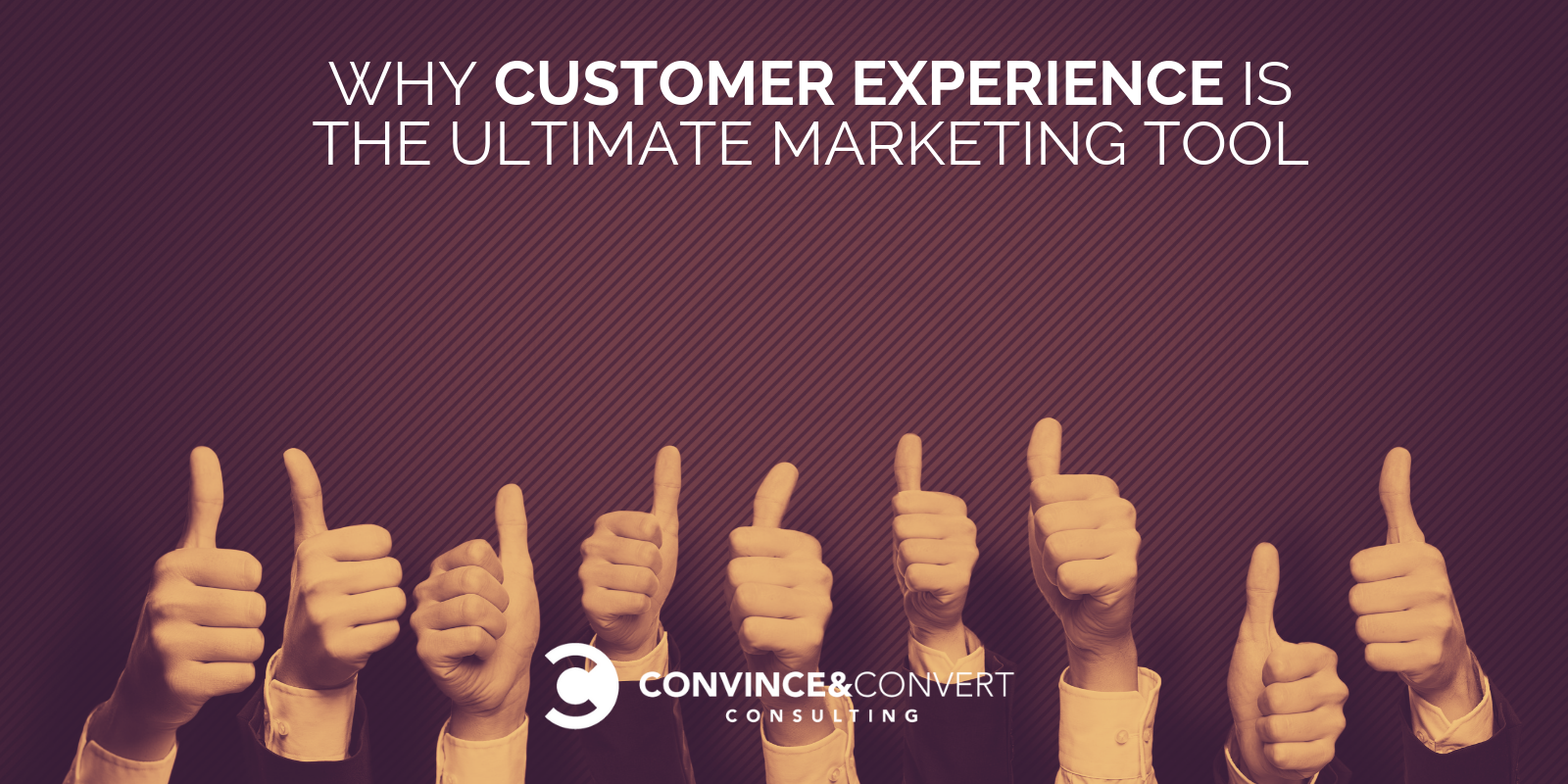
By 2020, a majority of purchase decisions will be made based on customer experience, not price.
And according to a study from Temkin Group, a moderate increase in customer experience generates an average revenue increase of $823 million over three years for a company with $1 billion in annual revenues.
INCREDIBLE.
A moderate increase in customer experience generates an average revenue increase of $823 million over three years for a company with $1 billion in annual revenues. Click To Tweet
Consumers are paying more attention to experience than ever, putting the pressure on customer experience (CX) professionals to deliver better and better experiences. As technology evolves, it is rapidly pushing the bar higher for more intuitive user interactions and transcendent usability. With these revolutionary developments, achieving a customer experience (CX) that exceeds the customers’ expectations is becoming increasingly challenging. Ease, speed, and accuracy is the 1-2-3 punch that will keep your customers loyal for the long haul.
Before we dive into why customer experience is mission critical, let’s start from the beginning and define what customer experience is (and what it isn’t).
What is Customer Experience?
Customer experience is the combined interactions a customer has with your brand. It looks at the lifecycle of the customer, mapping each and every touchpoint the customer has with you. It highlights where you’re delivering an exceptional experience, building loyalty and advocacy. And where you’re delivering a poor experience, driving your customers to competitors.
It puts you in the shoes of the customer.
Now you may be thinking, “every company has a customer service department. Isn’t that enough?” But customer service is transactional. It occurs at a specific moment in time and solves a particular problem.
Customer experience, meanwhile, is about showing up for the customer when and where they need you, with ease and consistency on their part. And it’s about making sure every interaction with the company is memorable and meaningful. It’s not transactional — it’s relational.

Who Is in Charge of Customer Experience?
In the past, responsibility for the customer experience has typically been divvied up among customer support, product, and other departments. Rarely has the responsibility rested squarely on one department, which means the authority to ensure top-notch CX throughout every phase of the funnel has been spread too thin. The customers being targeted with improved CX—in the entire lifecycle of awareness, intention, desire, action, and advocacy—are all potential customers. CX must be optimized for the prospect, audience, and influencer, as Gartner emphasizes.
A top-level view on CX reveals that it best fits under the umbrella of your marketing department, which is why marketing typically controls the majority of the customer experience budget.
Why Is Customer Experience Important?
So why the sudden focus on the customer experience? Offering great service has always been important, but is that what is really going to make a difference for your brand? The answer is an emphatic “YES.”
Your competition is growing and gaining more accessibility to your customers, learning where they hang out and how to ease their pain points. Meanwhile, there has been a customer-facing shift—they are now self-empowered, educating themselves thoroughly before each purchase decision, engaging your brand via whichever channel they deem fit and expecting excellent service. This has disarmed the product battlefield and opened up a new realm for you to conquer in order to win and keep customers: the customer experience.
Branded, personalized moments at each and every point of customer engagement are what market leaders are seeking. The gap must be closed between customer demand and what brands are actually delivering.
Here are 5 quick tips for improving your customer experience strategy:
1. Sport a User-Centered Design
This is the first checkpoint you put your entire customer experience through. You can erase the need for other fixes along the journey by ensuring that your website, product, or service is intuitively built to cater to your users’ expectations and needs.
You need to hire talent who can stay abreast of ever-changing user behavior, and having a smart design is only one fraction of this equation. Perhaps even more importantly, you need to test like crazy, analyze, adapt, and then test again. A/B testing is a brilliant approach for configuring the best marketing strategies for your business and is also an incredibly intuitive method for testing your CX.
User-centered design is crucial for learning about your customers’ needs and wants. This kind of knowledge helps you better cater to the consumer through marketing strategies and, of course, provide optimal customer experience.
2. Offer Personalized Engagements
It’s true that sometimes, personalization isn’t crucial. Some engagements are general and don’t require the extra finesse of personalized content. However, when personalization matters, it really matters.
This is important throughout the entire funnel. If your top-funnel visitors have to dig to find relevant information on your website, you are creating more effort and driving a huge wedge between you and them, especially considering that your competition is likely investing in these top-funnel, personalized experiences.
By the same token, once your prospects have become paying customers, know that any query you answer must be personalized. Don’t neglect your valued customers by displaying information that is geographically and contextually irrelevant to their account, needs, or past experiences with you. Seek out an automated solution that easily enables you to create a personalized experience for your customers.
3. Provide Clear Paths to Resolution
Not every customer engagement with your brand will be cut ‘n dry. Sometimes technology cannot satisfy your customers, and a human touch is required for more urgent issues. When the path to resolution is anything but a seamless straight line, it adds effort to the customer journey and puts a damper on the customer experience.
Re-channeling should be intelligent and immediate. If the first engagement is with a dynamic contact center or other self-service platform, then escalation to phone, chat, or email should be easy and targeted to the right agent with the right skill set.
Having a clear picture of your customer’s needs is a positive side effect of knowing your target audience. Naturally, the course of your customer intel will evolve as your company tests and grows. However, your initial target audience will tell you a lot about the genre of queries you may receive, and it’s wise to cater the design and CX accordingly. This is a customer’s dream—but it unfortunately does not occur enough.
4. Don’t Forget to Remember Thy Customers
If you wanna knock your customers’ socks off, then make them tell their story only once. Throughout the escalation process, each agent should have the full customer story from every previous customer engagement. They also must show a high regard for customers’ time by referencing this information to speed up resolution.
Remembering your customers is a process that harkens back to gathering and analyzing the details of your target audience through market research. Assuming that your company is not the first service they’ve used within your industry, learn the defaults of the previous companies they worked with and use these shortcomings to better your own service and hone your strengths in a highly saturated marketplace.
If a customer is engaging with you because of a problem, question, wrong service, or faulty product, they are probably not feeling much like a beam of sunshine. Having to revisit and explain the issue over and over will make their mood nosedive even more. Confidence in your brand will decrease, as it shows a lack of care and indicates antiquated technology where your CRM is concerned. Show up for your customers, and know what they want before they have to ask… again.
5. Properly Sync Social
Mobile customer service is in the spotlight lately, and your customers often defer to social channels when seeking resolution via mobile devices. Americans spend an average of 37 minutes daily on social media, which is more time spent than on any other internet activity, including email, according to the Wall Street Journal. It’s almost impossible to offer the kind of always-by-your-side support across all social media platforms that is necessary to pacify and even delight your customers.
If you have noticed unresolved questions, comments, and tweets on your social channels, or if your CRM is not syncing and recording these highly valuable customer engagements on social, it’s time to invest in a real solution.
Social Customer Service platforms such as Conversocial will put your mind and customer experience at ease. It’s the era of the customer, and they’re calling the shots. When they pull the trigger on social, you need to be there with the answers they need.
Start Improving Your Customer Experience Strategy Now
In customer service and in marketing, communicating with your customer means anticipating their wants, needs, and problems even before they arise. In 2019 and beyond, the battle will not be won on the price page or product features, but rather on the entirety of your customer experience.
Ready to start improving your customer experience strategy? Determine which areas of your business are key for your brand to make a positive impression on your customers. Talk to your customers and your employees. And get buy-in from leadership. Those actions will help guide you down the path to delivering a great customer experience.
And we can help you do just that. We work with brands to determine what your customers really want, where you’re exceeding those expectations, and where you may be falling short. We’ll evaluate your customer experience versus your key competitors and determine where you can create intersections that delight your customers and turn them into advocates on your behalf. We’ll investigate your offline and online customer journey and reputation on review sites and determine where you can improve where, how, and how fast. Ready to chat about your customer experience strategy? Let’s do it.
This post was originally written by Yifat Mor in 2015 and updated by Jay Baer and the Convine & Convert team in 2019.